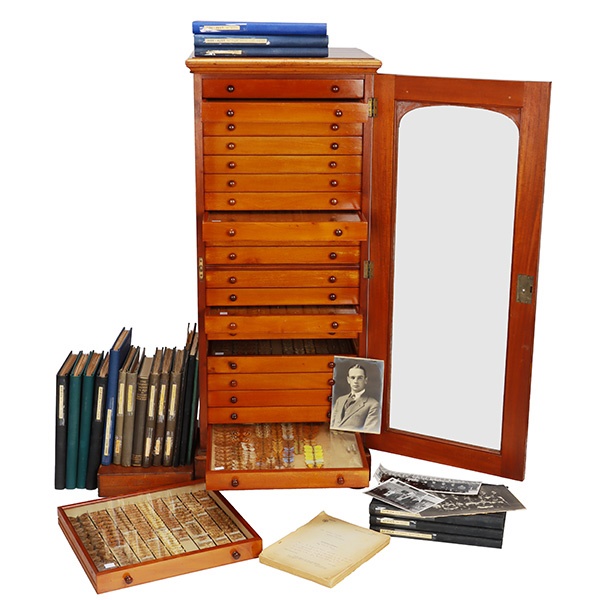The Butterfly & Moth Collection of Dr T. H. C. Taylor.
17/09/2023
Flints to offer an exceptional Moth and Butterfly collection as well as research papers and other material relating to Dr. Thomas Hugh Colebrook Taylor.
The collection includes a large Victorian cabinet of Taylor's own private collection of Moths and Butterflies as well as photographs, letters, and research notes including some very fine pencil drawings by Taylor. This is a rare opportunity to purchase a unique archive of this important English entomologist.

Dr T. H. C. Taylor, who died on April 14, 1972, 1 was a leading tropical entomologist and a pioneer of the biological control of insects leaving an enduring impact through his pioneering work on biological control of insects. After graduating with first-class honors in zoology from the University of London in 1924, Taylor's passion led him straight to Fiji, where he embarked on groundbreaking research. In his quest for effective insect control, he traveled extensively throughout Melanesia, Eastern Asia, and the West Indies, collecting suitable parasites and gaining invaluable insights into the diverse challenges of tropical entomology. Taylor's approach, which involved introducing natural predators and parasites to combat destructive pests, challenged conventional methods and established a promising alternative to the widespread use of harmful insecticides. His work laid the foundation for a new era of entomology, inspiring further exploration and advancements in the field.
In Fiji, Dr. Taylor took on the coconut moth (Levuana iridescens) problem by introducing the Malaysian fly parasite (Bessa remota). This successful intervention prompted him to further establish the eulophid wasp (Pediobiu.v parvulus) to control the coconut leaf-miner and the coocinellid beetle (Cryptognatha nodiceps) to manage the coconut scale insect. These introductions effectively eliminated these serious pests, thanks to Taylor's hands-on field studies and skillful breeding techniques.
Moreover, Dr. Taylor's early research in Trinidad on the thrips (Liothrips urichi) led to a successful control of the pasture weed (Clidemia hirta) in Fiji. By utilizing this natural predator, he demonstrated the potential of biological control as an alternative to harmful insecticides. This approach, which had already been pioneered in California and Hawaii, holds significant relevance today, given the growing global concern over the impact of insecticides on the environment.
In his notable publication, "The Biological Control of an Insect in Fiji," Dr. Taylor made a significant contribution to the establishment of biological control as a credible and effective method. He provided valuable insights into the techniques of breeding and deploying predator and parasitic insects in controlled environments. This knowledge formed the foundation for future advancements in the field.
In 1935, Dr. Taylor presented a paper in the Jubilee Proceedings of the Association of Applied Biologists, expressing his belief that biological control rarely succeeds in continental areas and is incompatible with chemical use. At the time, his assessment seemed accurate. However, subsequent developments and techniques have proven that biological control can be effective even in continental regions, challenging Dr. Taylor's initial viewpoint. Nonetheless, his early work remains crucial in driving our understanding and exploration of biological control methods.